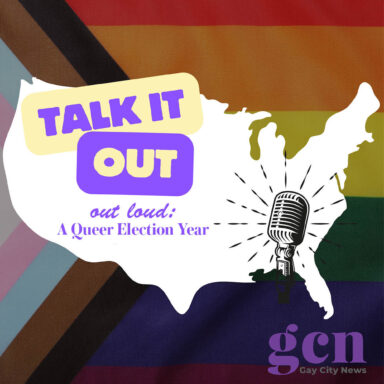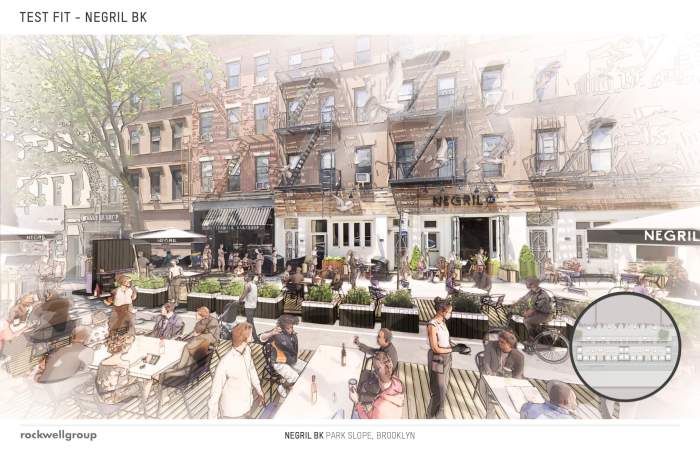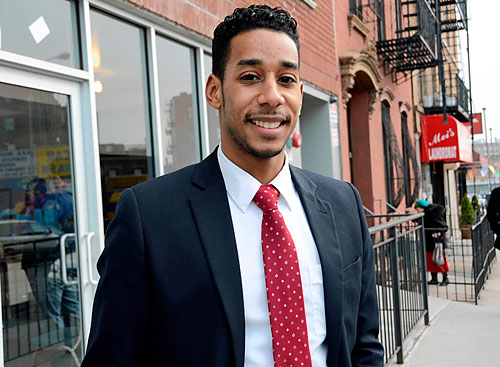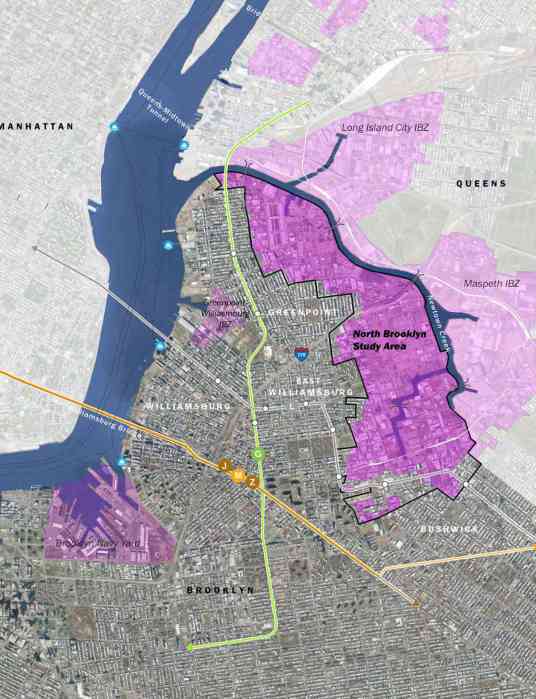North Brooklyn Councilmember Antonio Reynoso campaigned for borough president on a platform of creating a “boombox for progressive values” and zeroing in on under-resourced communities across the borough. He was the beneficiary of a coalescence of progressive support, with endorsements from political clubs like the New Kings Democrats and heavy hitters like Senator Bernie Sanders. With the November primary election all but decided by Brooklyn’s one party rule, the Democratic party nominee is all but certain to be the next beep. Brooklyn Paper caught up with Reynoso to talk about his vision for the borough.
This conversation has been edited for length and clarity.
Brooklyn Paper: You grew up on the south side of Williamsburg, and have represented the neighborhood in City Council for 8 years. How has this neighborhood impacted you as a policymaker?
Antonio Reynoso: Anyone can argue that Williamsburg in itself is a microcosm, or a representation of our larger borough. It’s a gentrifying district with pockets of poverty and because of affordable housing and some of the non-profits we have been able to maintain a significant amount of people that have been there for 30, 40, 50 years, while also the neighborhood has been introduced to tons of gentrification. Having to balance that, the needs of a new incoming population with the needs of a long-term, more poor and needy population — I really feel like being able to balance that, I guess subjectively I’m feeling like I did a good job at being able to do that. I feel like the same work of balancing different interests and different residents from different walks of life, is something that I feel like I can handle and do well.
Williamsburg is also, before the gentrification, was a neighborhood that didn’t receive the resources I think it appropriately needed, and I was able to advocate for reduction in trash, dealing with the asthma rates, an increase in park space, and open space, and just green space. It’s the same type of work I want to do for the borough, which is focusing on these areas that have been neglected, or haven’t received resources for a long time, and being able to dump resources and focus my time and energy on those areas.
Let’s talk community boards, you’ll soon be appointing community board members, how do you see yourself helming them, and do you think it’s important to get new blood on the boards?
I think we’ve got to be very careful, we have community boards that have a waitlist of 20, 30, 40 people who want to be on the community board, but we have other community boards that can’t meet quorum because we don’t have enough people participating in it. So we’ve got to be very careful with just painting the community board conversation, or the need for reform, with one brush. I think we are going to approach this with a scalpel more so than with a knife, or whatever you want to call it, an axe. We want to have a different approach for different community boards. We want to get some new blood in, naturally, there will be some new blood in some of these community boards, but I want to respect the fact that for a significant amount of time there have been people that have been volunteering their time and effort for civic engagement, so I want to respect that too and make sure that folks that are on the community board now, don’t feel threatened that I’m going to come in and replace everyone and everything, I respect that history, I respect that time, so I’m really going to be looking at this on a case by case basis.
But we have to be realistic, there are new rules and new pieces of legislation that have gone through that have made it so that a significant amount of community board members are going to have to leave because of the 10 year term limits situation, so naturally I’m going to have to find new people to put in. So there is going to be a bunch of new blood that is going to come in. New blood doesn’t necessarily mean young blood, it’s just new people on the community board. But I want to diversify the community boards in age, religion, creed, ethnicity, income, renters versus homeowner, cyclist versus car driver, I really want to have a diverse perspective on these community boards so they can be as representative of a community as possible.
Eric Adams has expressed an interest in up-zonings in wealthier neighborhoods to create more housing, moving the emphasis away from the more working-class neighborhoods that have been subject to rezonings in recent years. Is this you’re interested in? Are there wealthier neighborhoods in Brooklyn you think could be creating more housing?
I’m going to do a comprehensive plan for Brooklyn, and in that I’m going to determine what areas are ripe for development and have opportunity areas, and my assessment isn’t going to be based solely on poor Black and brown districts. I think we have to have serious conversations in any parts of Brooklyn that have zoning options that are one and two family homes — we really need to talk about it. There are areas that haven’t been part of our development conversation — like Sheepshead Bay and Mill Basin — that should also be a part of the development of affordable housing and housing in general. To solely put the development opportunities in poor Black and brown neighborhoods is a big concern for me, so I am very open — specifically in white affluent areas — that I am looking at development there, significant development there.
My approach is going to be more related to zoning landscape and data than it is political affluence, which I think is what dictates land use development now.
You’ll have an advisory role in all rezonings in Brooklyn, what other things do you hope to accomplish with that?
I think it’s very important to note that there’s been this YIMBY, NIMBY loop — doom loop is what Brad Lander and I call it — where it’s just like every single development has to be attacked by the community and I just don’t feel like that’s the right approach. I think ULURP encourages that fight between community and developers. Maybe we could have a more reasonable and sound conversation about development if it was more comprehensive!
So that’s the approach that I want to take — a comprehensive look at development so we could move away from this fight. And look — I’m a YIMBYist — that doesn’t mean build at all costs, right? It doesn’t mean ignore all opinions and all variables in development and just build for the sake of building. But it does mean that building is going to be important, and for a growing city it’s something that we’ve got to pay attention to and I’m going to make sure that folks know that my intention here is to build in Brooklyn, I want to build and I want to build the right way.
What street in Brooklyn do you think is most in need of street safety improvements?
It’s Atlantic Avenue. It’s the corridor that spans all the way from west Brooklyn to east Brooklyn, it’s an important corridor, an artery, and it’s one of the most dangerous places for everyone; pedestrians, cyclists, vehicles — it just doesn’t make any sense. I always say it’s like a four-year-old with Legos built Atlantic Avenue. There’s a bike lane through some of it, it goes elevated in one area, it’s a tunnel in another, it’s a normal street in one area it’s a highway in another, it’s just madness and it just lacks planning in any real way.
And I don’t want the Department of Transportation to continue to build out Atlantic Avenue in this piecemeal approach. The rezoning in East New York has made it so that Atlantic Avenue is going to look one way only where it was rezoned, why not look at it east to west comprehensively? Bring in all the expected officials and say we want one model street that speaks to what we want to see in progressive, modern transportation, and then build it that way with all the players involved.
Favorite pizza in Brooklyn?
Look, I know there’s a lot of folks in Bay Ridge and different places that will disagree with me. But there’s this place called Cozzi Pizza — and it’s not Cozy Pizza the franchise — on Broadway. It’s actually in Steve Levin’s district, and it’s nostalgia all the way, it’s how I remember pizza when I was growing up, and Cozzi keeps it original. So that’s my favorite pizzeria, and I’m more than happy to walk around and go to all these famous places, but right now Cozzi is home, and I really appreciate the way they do pizza.
























